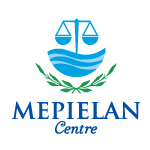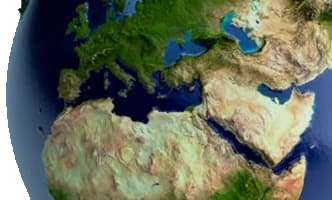The Twelfth Meeting of the Conference of the Parties to the Ramsar Convention* on Wetlands took place from 2 to 9 June 2015 in Punta del Este, Uruguay. The Conference was attended by over 800 participants including representatives of the Contracting Parties to the Ramsar Convention as well as representatives of the International Organization Partners of the Convention, UN agencies, intergovernmental organizations and non-governmental organizations. The objective of the Conference was to review the progress of the Convention, to share knowledge and experience on technical issues and to adopt for the next years a new framework for the delivery of scientific and technical advice and guidance on the Convention, peatlands, disaster risk reduction and a wetland city accreditation of the Ramsar Convention.
The most important accomplishment of the Meeting was the adoption of the Strategic Plan 2015-2024, as well as the successful attempt to link the Convention with other relevant international regimes, such as the Convention on Biological Diversity, the Sustainable Development Goals and the Sendai Framework on Disaster Risk Reduction. More specifically, the new Strategic Plan** will guide countries’ actions to conserve and wisely use their wetlands*** and is based on four strategic priorities****: (a) addressing the factors driving the loss and degradation of wetlands by ensuring that decision-makers in key sectors, such as water, energy, mining, agriculture, tourism and urban development, appreciate the value and benefits wetlands provide and include these benefits in policy; (b) renewing country commitment to conserve and protect the Ramsar site network, considered to be of high value to each country and to the world because of the ecosystem services they provide; (c) promoting wise use of all wetlands and restore wetlands that are relevant for biodiversity conservation, disaster risk reduction, livelihoods and/or climate change mitigation and adaptation; (d) improving the implementation of the Convention by mobilizing resources, working through partnerships, building capacity and raising awareness. These four goals are accompanied by 19 corresponding targets.
Besides the Strategic Plan 2015-2024, the Meeting adopted by consensus fifteen other resolutions with the aim of facilitating the implementation of the Strategic Plan. Key points of the resolutions were inter alia the enhancement of the Convention’s stature and visibility at national, local, subnational, and regional levels; the increase of synergies with other MEAs and other international institutions; the creation of a new framework for the delivery of scientific and technical advice and guidance to the Convention; the mobilization of new financial resources and the identification of potential partners, donors and other financing organizations; the adoption of the CEPA Programme***** 2016-2021; the establishment of the World Wetland City Accreditation System to preserve urban and peri-urban wetlands threatened by expanding cities, the underline of the relation between peatlands and climate change regulation; the protection of water requirements of wetlands in order to maintain their healthy functioning for the future and present; the integration of wetland-based disaster risk reduction and management into national strategic plans and all relevant policies and finally; and the conservation of Mediterranean Basin island wetlands.
Additionally, the Conference of the Parties encouraged the Contracting Parties to promote and strengthen the participation of indigenous peoples and local communities; to allocate from their national budgets financial resources for the implementation of the 4th Strategic Plan; to continuously monitor progress in the implementation of the Strategic Plan and communicate progress as well as any difficulties in implementing the Plan in their National Reports; and to establish and submit to the Secretariat on or before December 2016 their own national targets in line with the targets set in the Strategic Plan according to their national priorities and capabilities; and to develop their own work plan and consider mechanisms for its implementation.
Last but not least, the delegates adopted the Declaration of Punta del Este which underlines the vital role that wetlands play in achieving the Sustainable Development Goals and calls on parties to diligently implement the new Strategic Plan.
The Conference of the Parties convened under the theme “Wetlands for our Future,” and as the NGOs stated at the end of the meeting, “this future starts now,” implying the need for immediate followup action. As a result of this Conference, the Convention appears, in the eyes of many, to be better geared to play a role in other international processes, but work in that regard needs to start right away if Ramsar is to stay on top of fast-approaching global developments, such as a new climate agreement and the UN post-2015 development agenda. The shift from detailed technical issues towards more policy-oriented guidance was generally greeted as a positive change in the process, as it may place Ramsar authorities in a better position to influence decisions that are badly needed to achieve a substantive improvement in the conservation and management of wetlands around the world.
The next Conference of the Parties to the Ramsar Convention on Wetlands will take place in Dubai in 2018.
Notes
* The Ramsar Convention was adopted in the Iranian city of Ramsar in 1971 and came into force in 1975. The Convention’s mission is “the conservation and wise use of all wetlands through local and national actions and international cooperation, as a contribution towards achieving sustainable development throughout the world”.
** This is the 4th Strategic Plan of the Ramsar Convention, the first of which was prepared in 1997.
*** Wetlands are areas of marsh, fen, peatland or water, whether natural or artificial, permanent or temporary, with water that is static or flowing, fresh, brackish or salt, including areas of marine water the depth of which at low tide does not exceed six metres.
**** For further information visit:
http://www.ramsar.org/sites/default/files/documents/library/cop12_dr02_strategic_plan_e.pdf
***** Convention’s communication, education, participation, capacity building and awareness (CEPA) Programme
Source: Ramsar Convention on Wetlands, IISD Reporting Services
For Further Information:
http://www.iisd.ca/download/pdf/enb1746e.pdf
http://www.ramsar.org/news/declaration-of-punta-del-este-affirms-wetlands-as-essential-for-sustainable-development
http://www.ramsar.org/sites/default/files/documents/library/cop12_dr02_strategic_plan_e.pdf
About the author

MEPIELAN Centre
MEPIELAN Centre is an international research, training and educational centre established by Professor Evangelos Raftopoulos at the Panteion University of Athens in 2008.
Before its establishment as a University Centre, MEPIELAN operated as a successful international research, training and informational programme (2002-2007) under the scientific direction of Professor Evangelos Raftopoulos and the aegis of the Panteion University of Athens, supported by the Mediterranean Action Plan/UNEP and the Greek Ministry of the Environment, Physical Planning and Public Works.
MEPIELAN Centre is an accredited UNEP/MAP PARTNER (since 2013), a Member of the Mediterranean Commission on Sustainable Development (MCSD) (since 2016), and a Member of the Steering Committee of the MCSD (since 2019).
On 22 May 2022, MEPIELAN Centre proceeded to the development of MEPIELAN as a Non- Profit Civil Organization (INGO) for the more effective and efficient advancement of its Goals and Missions and furtherance of its activities. MEPIELAN Centre as a Non- Profit Civil Organization (INGO) is registered in Greek Law (Hellenic Business Registry, Reg. No. 16477300100) in accordance with Laws 4072/2012 & 4919/2022 as applicable


